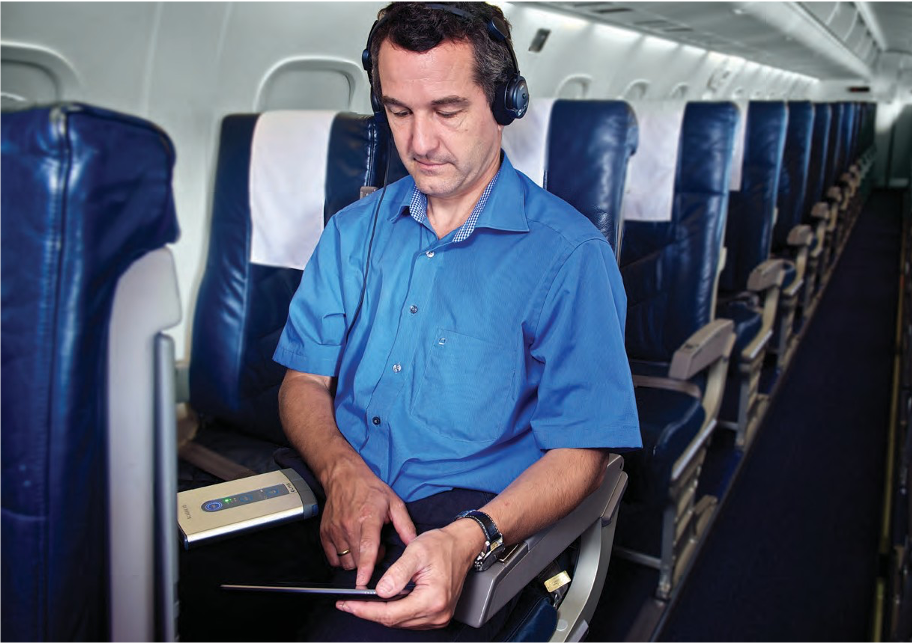Noise reduction and sound engineering are a continuous challenge in the aircraft design process for both exterior and interior acoustics. Strict regulations and today’s standards for passenger comfort require a more quiet aircraft. Stringent regulations on takeoff, flyover, and landing noise are forcing manufacturers to limit noise emission from the engine (fan inlet noise, bypass outlet noise, jet mixing noise, and shock cell noise) and the airframe (turbulent layer noise, landing gear noise, winglet noise, and antenna noise). In addition, today’s expectations for passenger comfort have raised the bar for interior noise levels and improved sound quality.
However, acoustic requirements are more than often in conflict with the ever more stringent environmental requirements for lighter, greener, and more eco-friendly aircraft. The development of new materials and composite structures brings an undoubtedly significant weight reduction. On the other hand, this weight reduction typically has a negative impact on the acoustic performance of the aircraft. Finding the balance between those conflicting requirements is a day-to-day challenge for acoustic engineers. In addition, the need to stay within budget and on schedule adds to the challenge. There is a need for deeper engineering insight in order to achieve this.
For example, optimizing acoustic cabin comfort can be a complex engineering task.
Controlling interior noise levels requires a system-level treatment technique that addresses both airborne acoustic energy and structure-borne vibration energy. Successful engineering relies on choosing the right materials or acoustic treatments and having a deep understanding of how they work, how to test them for feeding models, how and where to install them, and how to test final performance improvement.
Image: courtesy of Belgian Defense.
Simcenter Testlab Interior Sound Source Localization is a complete solution for quick and accurate identifi- cation and ranking of sound sources in highly complex interiors
Scalable solutions for accurate acoustic testing and sound engineering
Simcenter testing solutions offer a complete and unique suite of software and hardware for acoustics testing and analysis, including straightforward acoustic analysis, material, and component testing, sound power and fly by noise testing, sound source localization, vibroacoustic engineering, sound quality analysis, and validation of simulation models.
Scalable to your project requirements, each solution offers task-specific advantages in terms of return on investment (ROI). Simcenter solutions can be customized and integrated into your own project requirements for projects such as jet-engine or wind-tunnel testing.
Where is the sound coming from?
For exterior and interior noise, identifying the location of a sound source is a challenge and can be quite time-consuming. To map how noise radiates to the exterior, flyover, or wind tunnel measurements can provide valuable information.
Siemens Digital Industries Software has designed a number of cutting-edge sound source localization (SSL) solutions to increase overall testing productivity for both in-flight and on the ground sound source localization. Those solutions have been developed in collaboration with MicroDB and Airbus and allow for a significant saving of time and resources.
They include:
General-purpose solutions for acoustic troubleshooting and SSL: classical sound intensity measurements using one or more dedicated sound intensity probes measured at several consecutive points close to the radiating surface. This well-accepted method is easy to set up, spans a large frequency band, and provides an intensity map.
Image: courtesy of Belgian Defense.
Dedicated solutions for flyover noise quantification, sound power, and source ranking, with customized multi-channel, array-based measurement, and processing systems for localization of the noise sources. The beamforming technique is enhanced with deconvolution techniques providing a better spatial resolution.
Image: courtesy of Belgian Defense.
Interior sound source localization for cockpit noise or cabin noise and acoustic leak detection can be performed using the Simcenter Testlab 3D Acoustic Camera. The solid spherical 3D acoustic camera allows for one-shot SSL and speeds up aircraft acoustic testing and engineering processes, enabling you to perform measurements in a few seconds that provide acoustic maps, back-calculated and projected on a 3D view of the cabin or equipment. This yields on-the-spot accurate and comparable results. It can be employed not only for source localization but also for quantification and ranking. It allows you to have a full acoustic view on the radiation of the sound in a very short time, even from transient sounds (for example, from the sound of electronics or landing gear retracting). The combination of a solid surface array with additional microphones on extension arms also allows you to cover a broad frequency range for interior measurements. It quickly reveals the full sound profile of the aircraft interior in various ground and flight conditions and offers an excellent spatial resolution to clearly separate sound sources.
Image: courtesy of Belgian Defense.
The Simcenter™ Soundbrush™ system was developed for quick troubleshooting of noise sources. It is an all-in-one pressure or intensity scanning tool with integrated automatic position detection. This device allows you to show in real-time a 3D map of the sound intensity around the surface or object that is scanned.
Image: courtesy of Belgian Defense.
Credit: Siemens Digital Industries Software
If you have any inquiry or more information related to Simcenter™ software, please don’t hesitate to reach us by click the below button.






